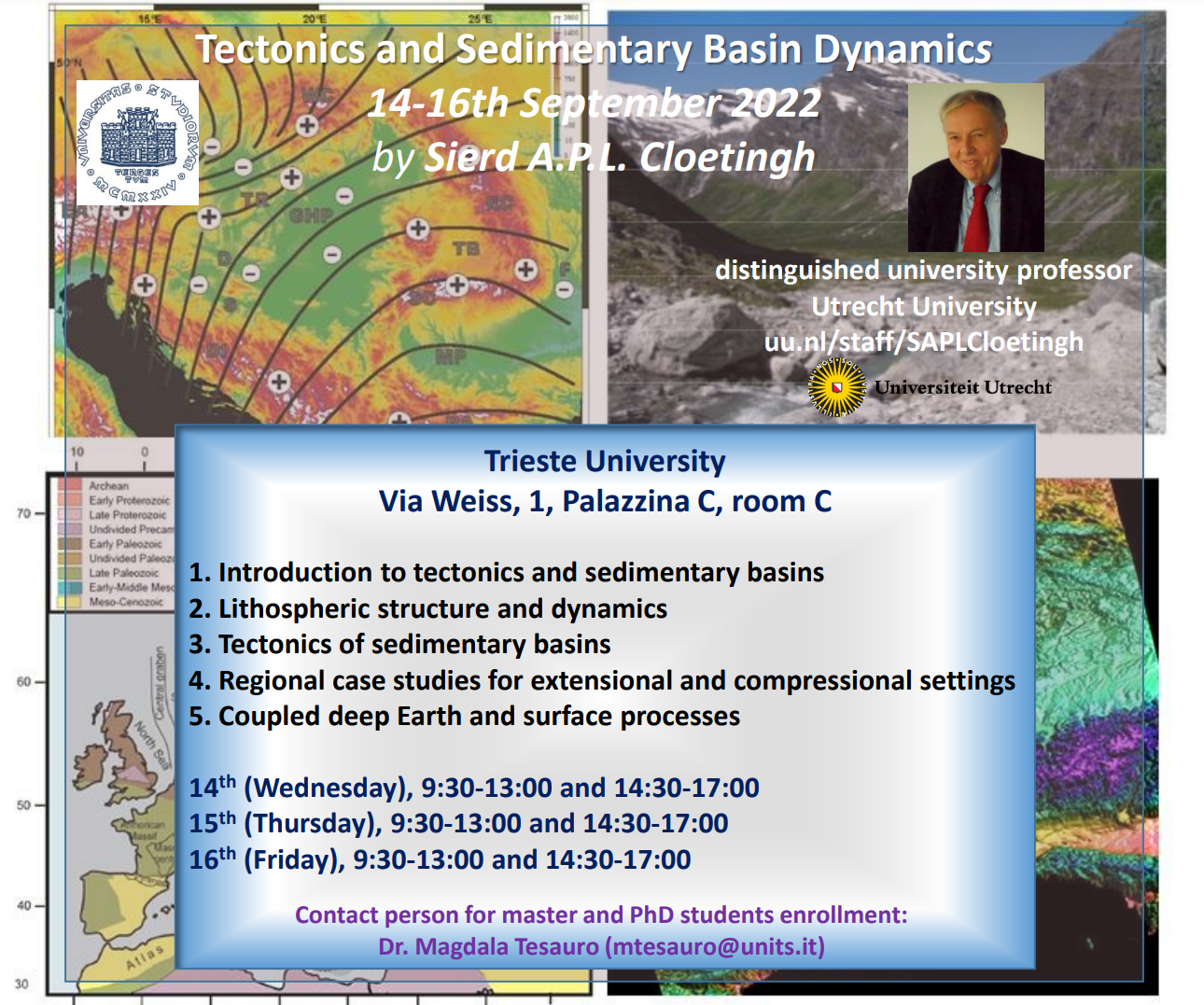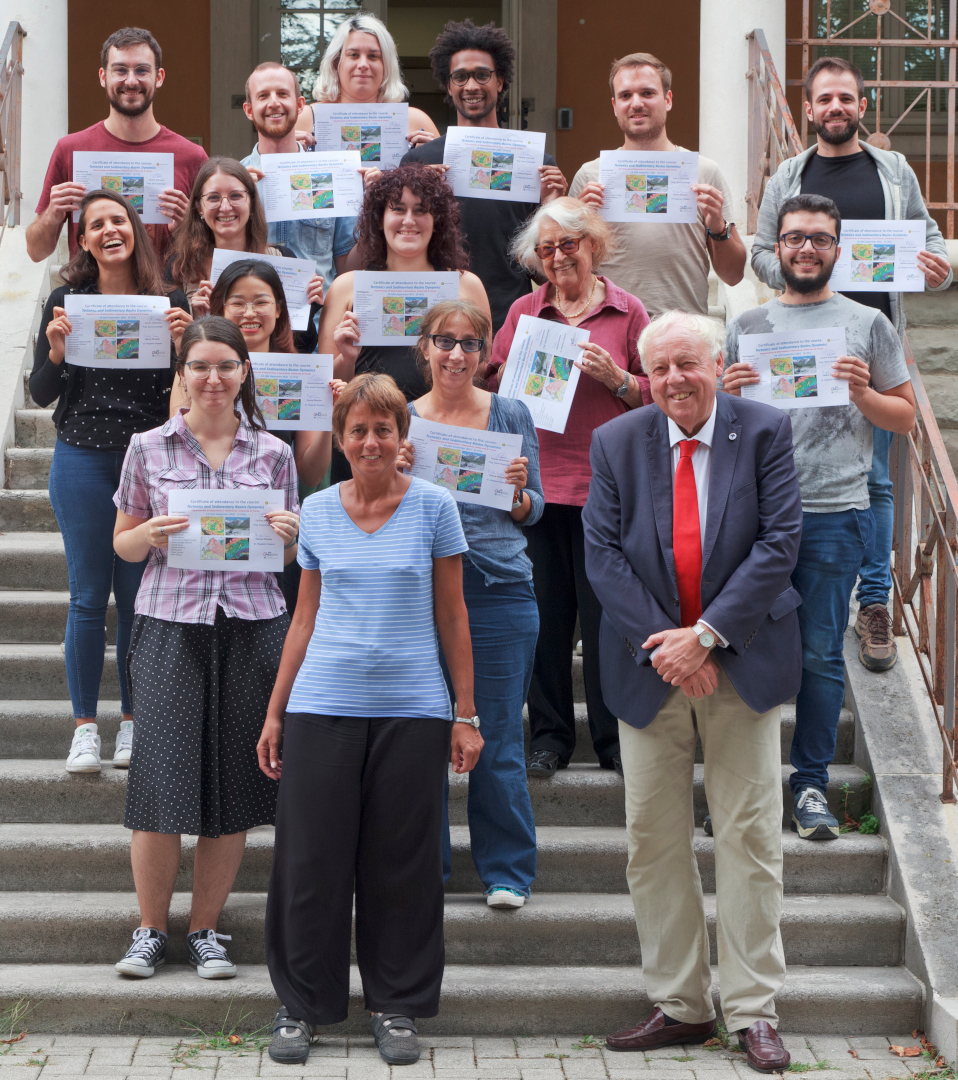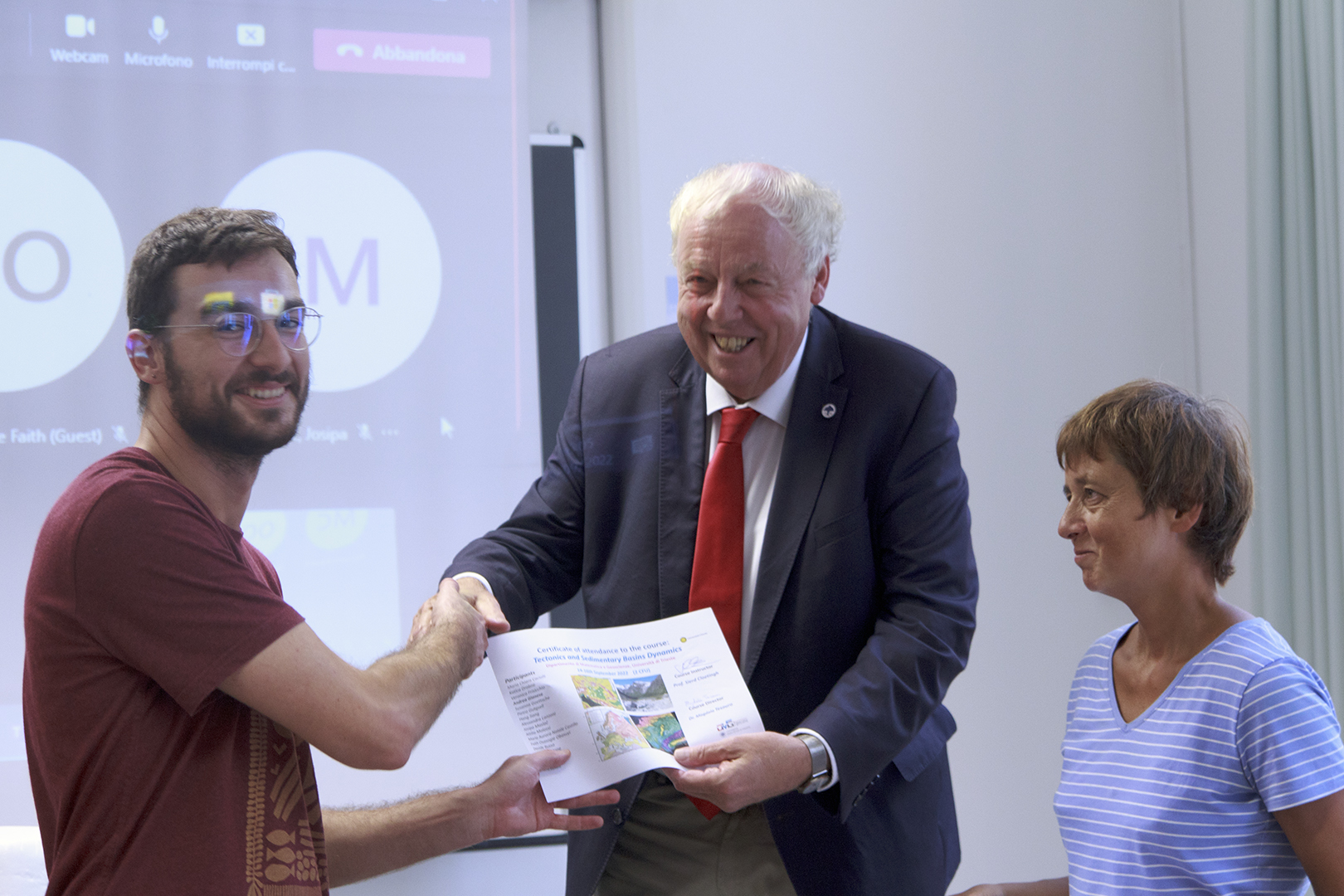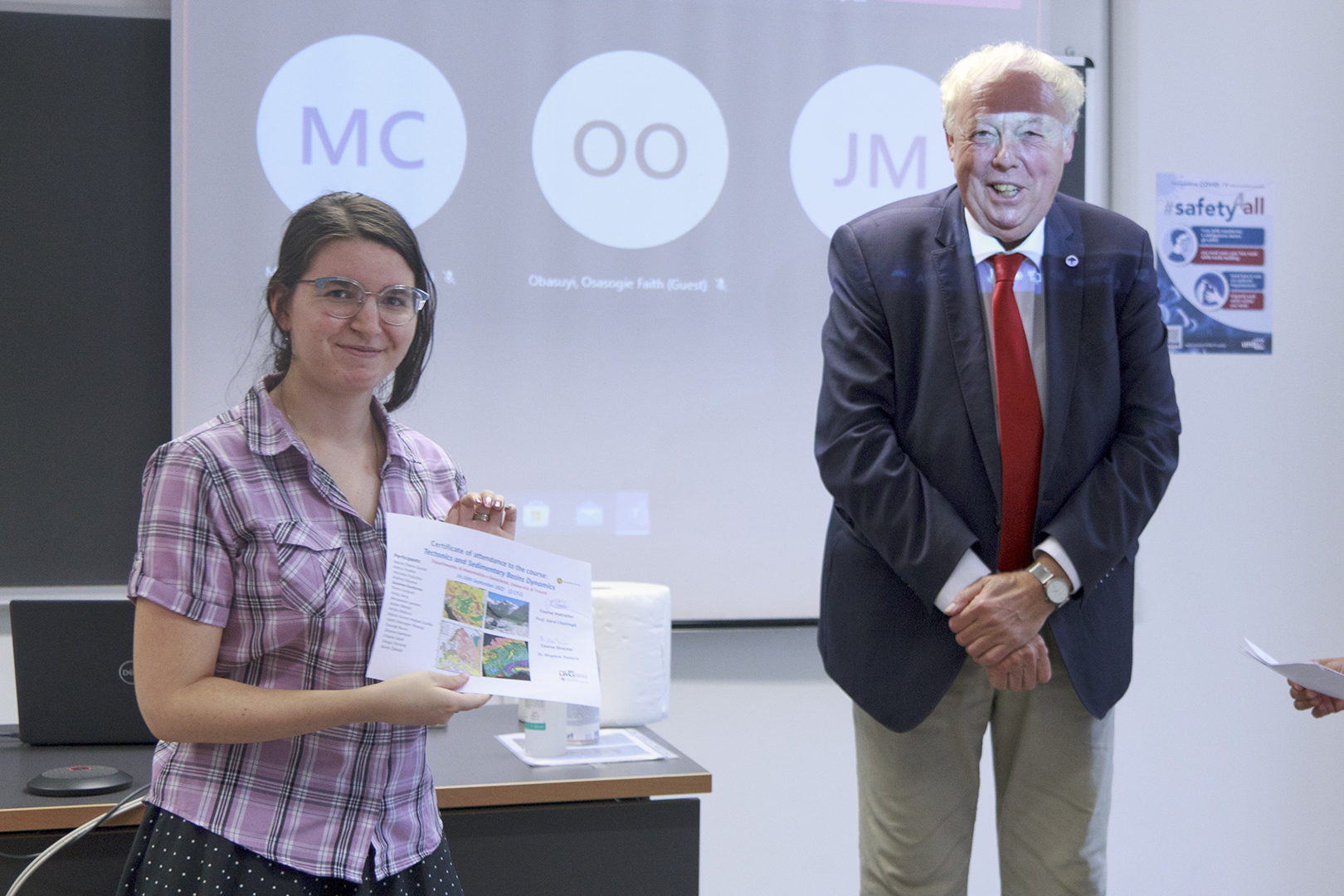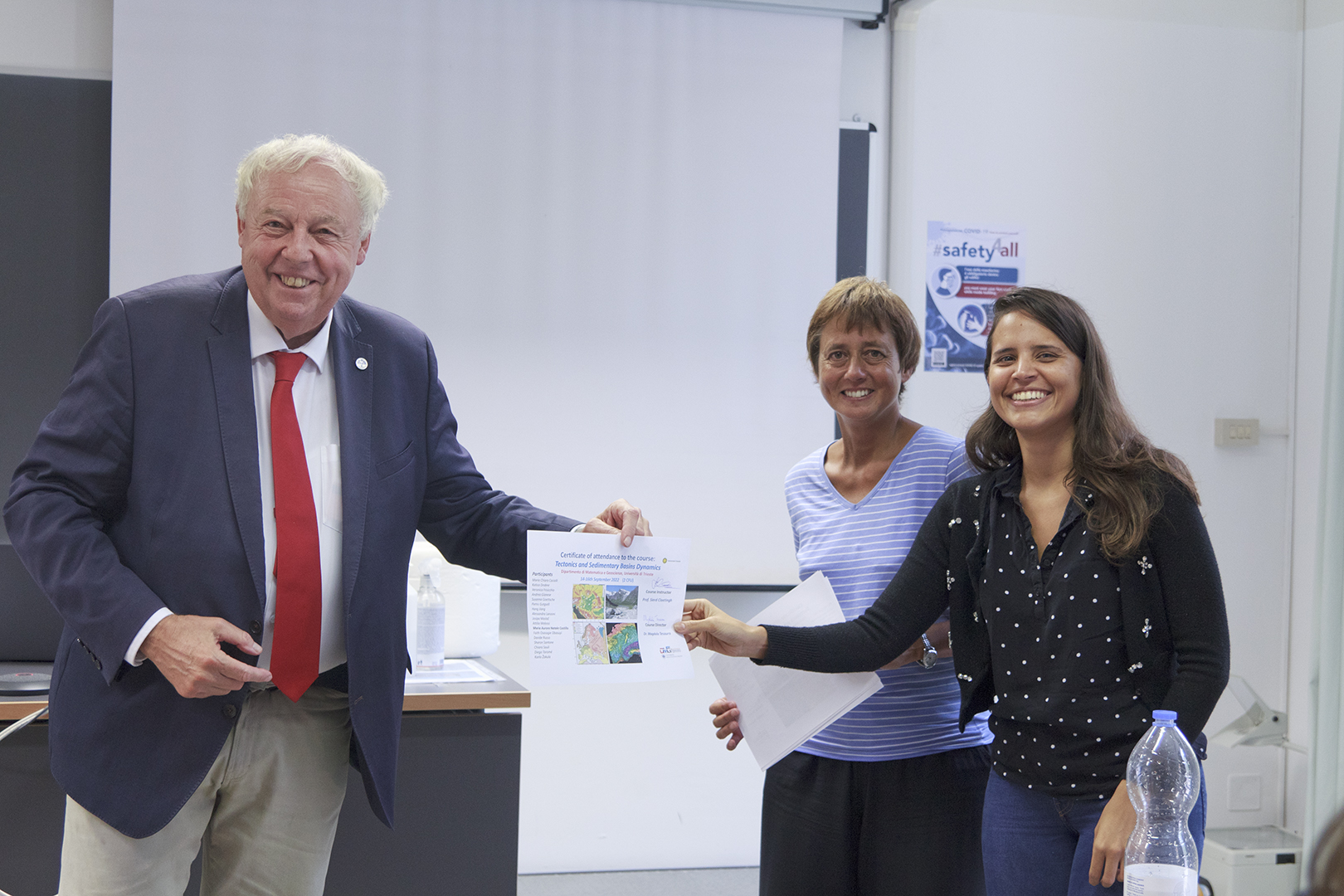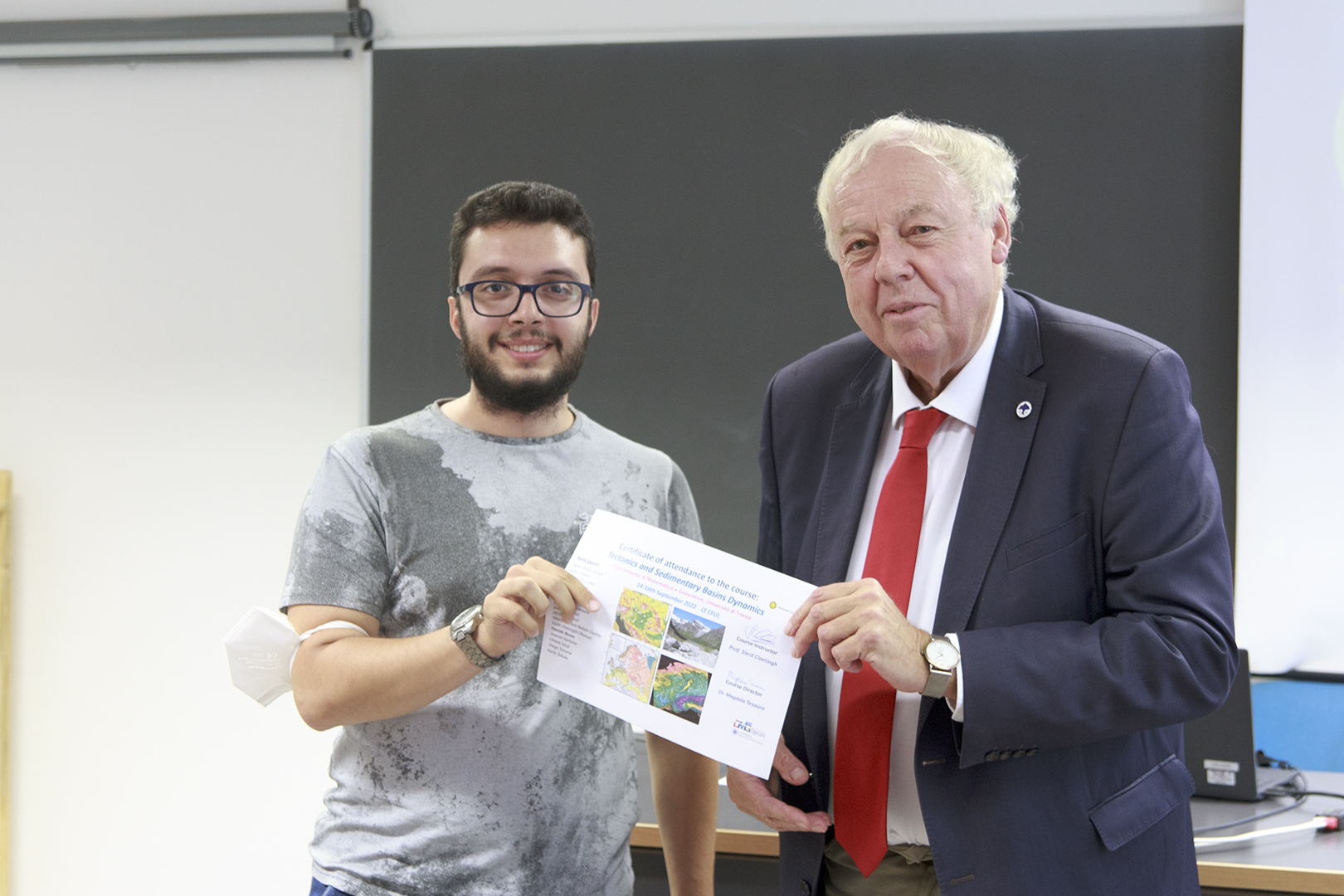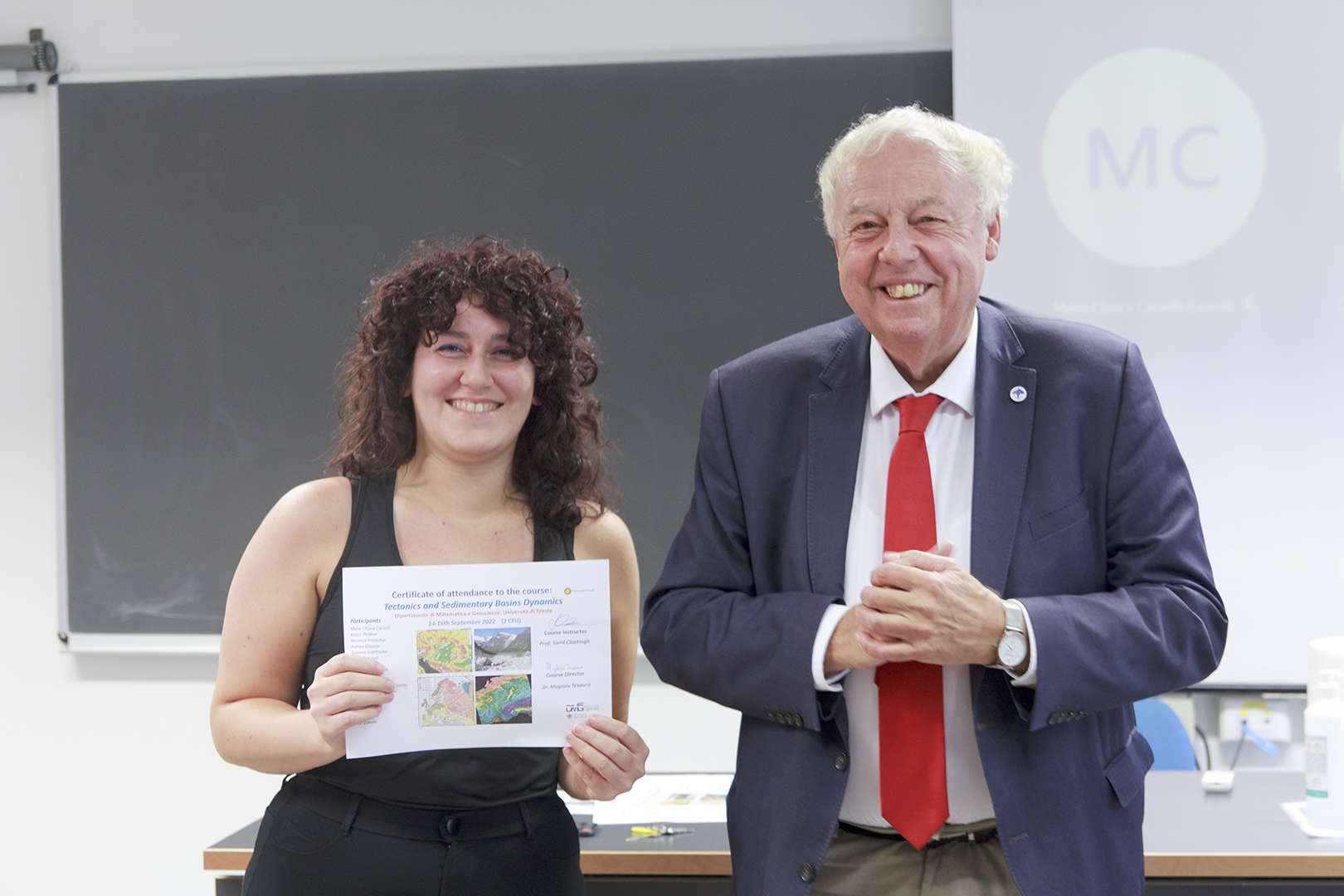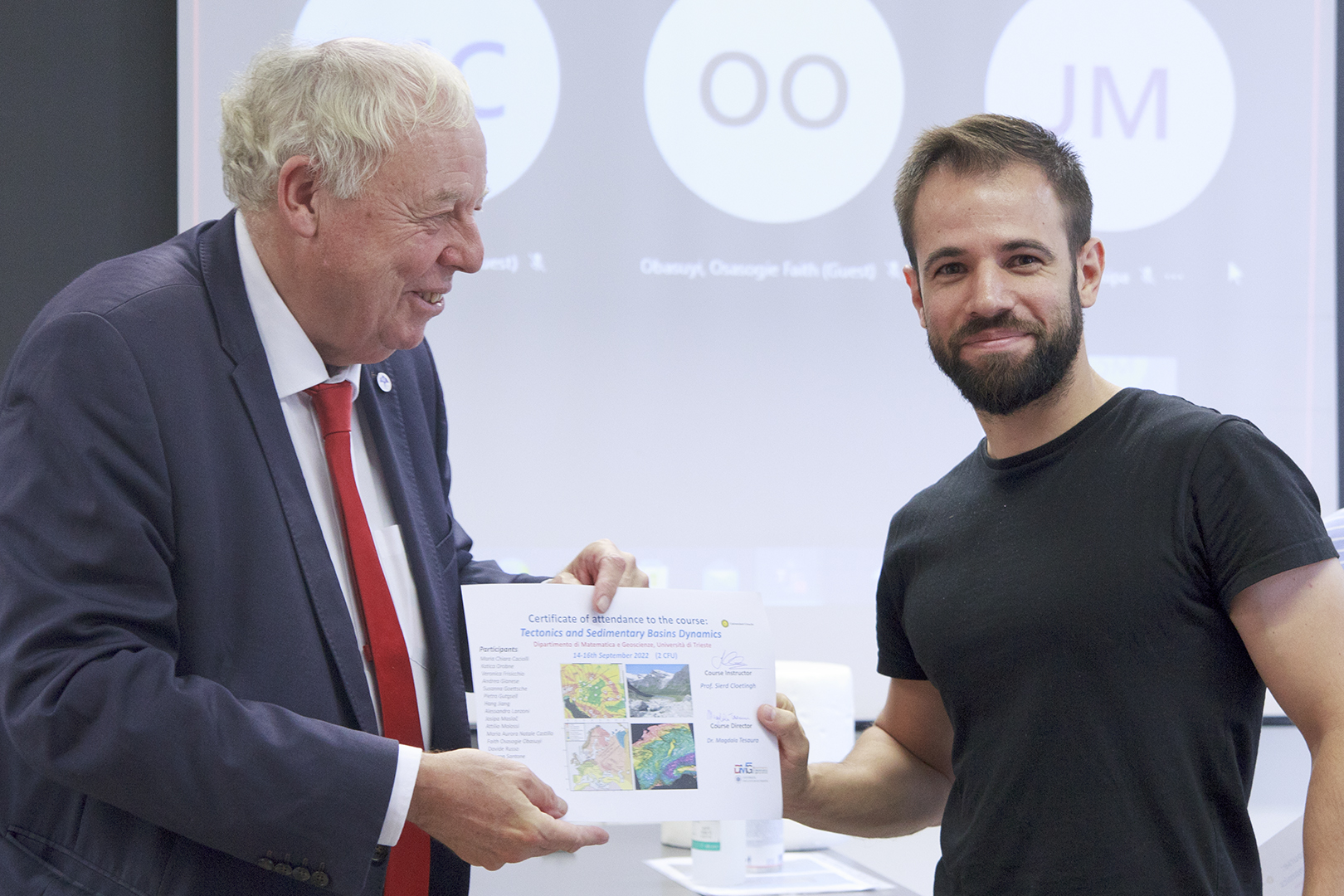Recent events
Seminar: Slip distribution of the February 6, 2023 Mw 7.8 and 4 Mw 7.6, Kahramanmaraş, Turkey earthquake sequence through optical and SAR remote sensing acquisitions
Speakers: Carla Braitenberg & Muhammad Tahir Javed
When: 2023-05-17, 16:15 to 17:00 (CEST)
See also: event page on DMG website
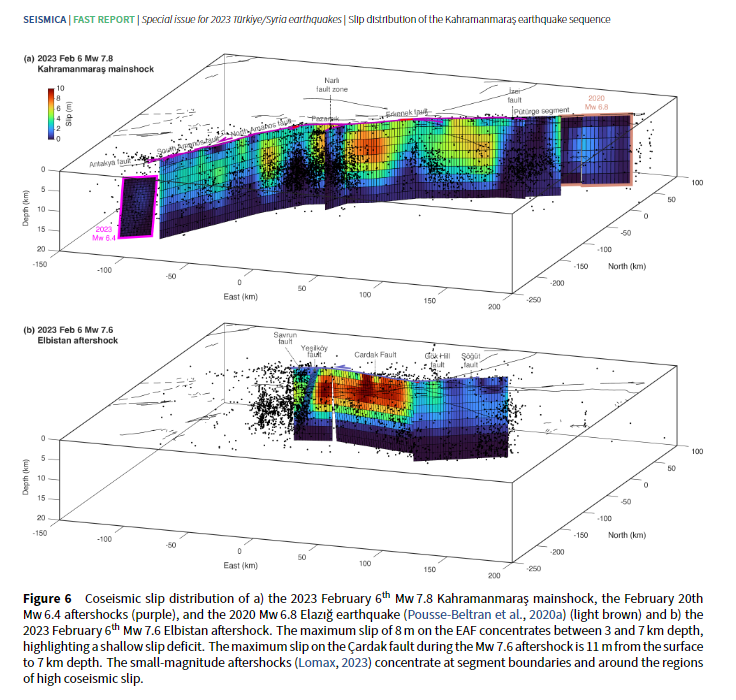
The indentation of Arabian plate towards the Anatolian plate forms triple junction slip partitioning among the North Anatolian Fault (NAF), the East Anatolian Fault (EAF), and the Main Recent Fault. The NAF is a 1,200 km-long, mature, right-lateral strike-slip fault while the EAF, 310 km-long left-lateral fault, extend southwards and branches out diffusely to the Dead Sea Fault (DSF) and the Cyprus Arc to the southwest. On February 6, 2023, two large earthquakes occurred near the Turkish town of Kahramanmaraş. The moment magnitude (Mw) 7.8 main-shock ruptured a 310 km-long segment of the left-lateral East Anatolian Fault, propagating through multiple releasing step-overs. The Mw 7.6 aftershock involved nearby left-lateral strike-slip faults of the East Anatolian Fault Zone, causing a 150 km-long rupture.
We use remote-sensing observations to constrain the spatial distribution of coseismic slip for these two events and the February 20 Mw 6.4 aftershock near Antakya. Pixel tracking of optical and synthetic aperture radar data of the Sentinel-2 and Sentinel-1 satellites, respectively, provide near-field surface displacements. High-rate Global Navigation Satellite System data constrain each event separately. Coseismic slip extends from the surface to about 15 km depth with a shallow slip deficit. Most aftershocks cluster at major fault bends, surround the regions of high coseismic slip, or extend outward of the ruptured faults. For the mainshock, rupture propagation stopped southward at the diffuse termination of the East Anatolian fault and tapered off northward into the Pütürge segment, some 20 km south of the 2020 Mw 6.8 Elaziğ earthquake, highlighting a potential seismic gap - currently we are working on it. These events underscore the high seismic potential of immature fault systems.
The article is published and available online (open access) :
Barbot, S., Luo, H., Wang, T., Hamiel, Y., Piatibratova, O., Javed, M.T., Braitenberg, C. and Gurbuz, G., 2023. Slip distribution of the February 6, 2023 Mw 7.8 and Mw 7.6, Kahramanmaraş, Turkey earthquake sequence in the East Anatolian Fault Zone. Seismica, 2(3). doi:10.26443/seismica.v2i3.502
Course: Tectonics and Sedimentary Basin Dynamics
14-16th September 2022
by Sierd A.P.L. Cloetingh, Distinguished university professor Utrecht University.
- Introduction to tectonics and sedimentary basins
- Lithospheric structure and dynamics
- Tectonics of sedimentary basins
- Regional case studies for extensional and compressional settings
- Coupled deep Earth and surface processes
